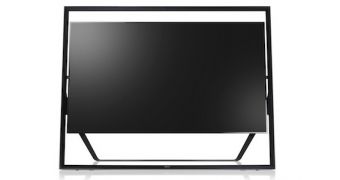Back in 2011, 3D panels became a rave, only to quickly fade into their own niche after just a few months. There were a few tries at trade shows to promote them as the new groove, but not much came of them, not without glasses-free support that has remained rare to this day.
Now, though, a new so-called "savior" has appeared, the UHD TV, or TV with 4K resolution (3840 x 2160 pixels).
A lot has been written about them, and the plans that display makers have for them.
Analysts are careful though, IHS in particular. After the failure of 3D screens to make much of a difference, 4K resolution hasn't managed to acquire that aura of promise.
"A few years ago, 3D TV came onto the market with tremendous hype and promise to transform how people watch TV," said Sweta Dash, senior director of display research and strategy at IHS, iSuppli.
"This promise never came to fruition. Instead, faced with a lack of content, high pricing and inconvenient technology, 3D never emerged from a niche status, a situation that continues today."
Yet companies hope to sell hundreds of thousands, if not millions, of these UHD TVs before the year is out, and to bring the figure to 7.1 million units in 2015.
To be fair, 4K has some advantages. Where 3D TVs lacked and still lack content, 4K TVs can upscale resolution easily enough.
It doesn't hurt that there is no need for glasses (no need for change in consumer behavior, as IHS puts it) and that TV brands are doing their best to increase UHD content at the same rate as UHD TV adoption.
"However, having learned from past mistakes, TV suppliers are gearing up to make Ultra HD TV a success, determined not to repeat the mistakes they made with 3D. However, the level of consumer demand for Ultra HD TVs is still not clear. Lower yields, higher costs, slower TV sales, lack of content and delays in production all will lead to lower shipments than many in the industry expect," Dash said.

 14 DAY TRIAL //
14 DAY TRIAL //